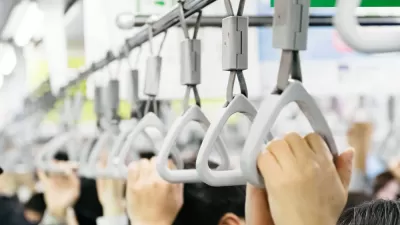Sarah Goodyear reports on how Britain's 'Cycle to Work' scheme has decreased carbon dioxide emissions, and transformed the lives of individuals such as Toby Field.
Britain's Cycle to Work scheme makes it affordable for employees to invest in bicycles and ride to work, saving participants up to 40 percent of a bicycle's initial purchse price. Goodyear writes, “Here’s how it works: an employer fronts the cost of a bike, up to £1,000 (about $1,600), and the employee pays it back over 12 months with pre-tax payroll deductions, with one final payment at the end of the period.” The program has been highly effective since its inception in 1999, providing bikes to over 400,000 individuals. It has also led to a reduction in carbon dioxide emissions equivalent to the output of a city of 60,000 people.
But for Goodyear, what is more impressive is the personal impact the program has had on riders such as Toby Field, a 33-year old who suffered from obesity, and whose father died at the age of 55 from obesity-related health problems. Now, writes Goodyear, “Field has ridden 10,000 miles in two years, two-thirds of those miles on his commute" adding, "[h]e’s lost 119 pounds and he's fitter than he's ever been." Alas, despite the potentially life-changing benefits of programs such as 'Cycle to Work' in England, Goodyear points out that in the U.S, parking continues to receive “the biggest tax incentive." She concludes, “It’s too bad. People like Toby Field could tell you that the benefits of riding to work can be priceless.”
FULL STORY: How Britain Is Helping Its Citizens Buy Bikes

Planetizen Federal Action Tracker
A weekly monitor of how Trump’s orders and actions are impacting planners and planning in America.

Restaurant Patios Were a Pandemic Win — Why Were They so Hard to Keep?
Social distancing requirements and changes in travel patterns prompted cities to pilot new uses for street and sidewalk space. Then it got complicated.

Maui's Vacation Rental Debate Turns Ugly
Verbal attacks, misinformation campaigns and fistfights plague a high-stakes debate to convert thousands of vacation rentals into long-term housing.

In California Battle of Housing vs. Environment, Housing Just Won
A new state law significantly limits the power of CEQA, an environmental review law that served as a powerful tool for blocking new development.

Boulder Eliminates Parking Minimums Citywide
Officials estimate the cost of building a single underground parking space at up to $100,000.

Orange County, Florida Adopts Largest US “Sprawl Repair” Code
The ‘Orange Code’ seeks to rectify decades of sprawl-inducing, car-oriented development.
Urban Design for Planners 1: Software Tools
This six-course series explores essential urban design concepts using open source software and equips planners with the tools they need to participate fully in the urban design process.
Planning for Universal Design
Learn the tools for implementing Universal Design in planning regulations.
Heyer Gruel & Associates PA
JM Goldson LLC
Custer County Colorado
City of Camden Redevelopment Agency
City of Astoria
Transportation Research & Education Center (TREC) at Portland State University
Camden Redevelopment Agency
City of Claremont
Municipality of Princeton (NJ)





























